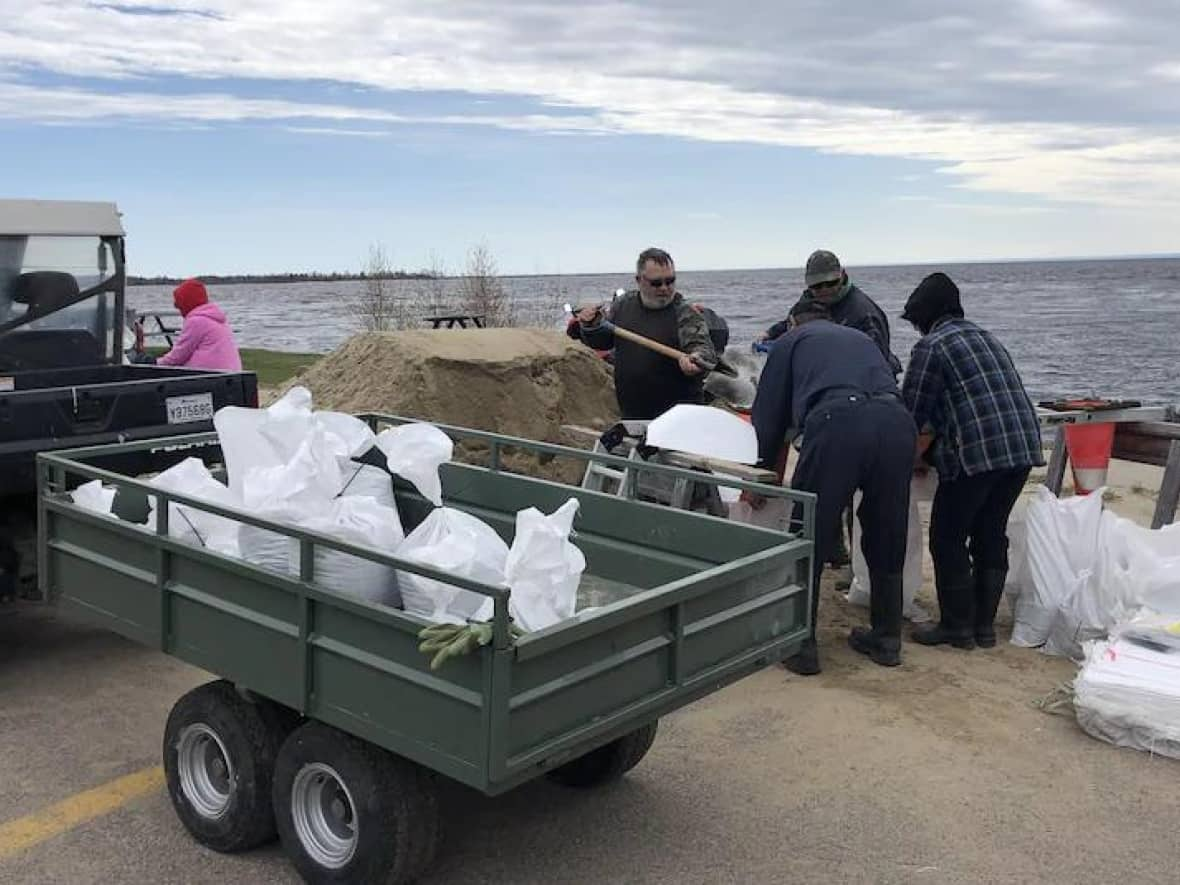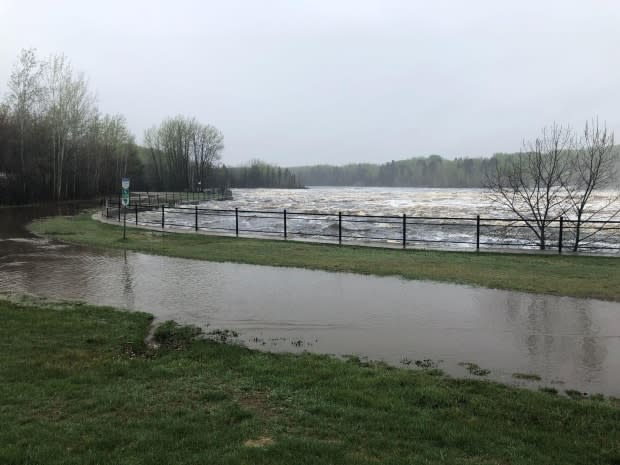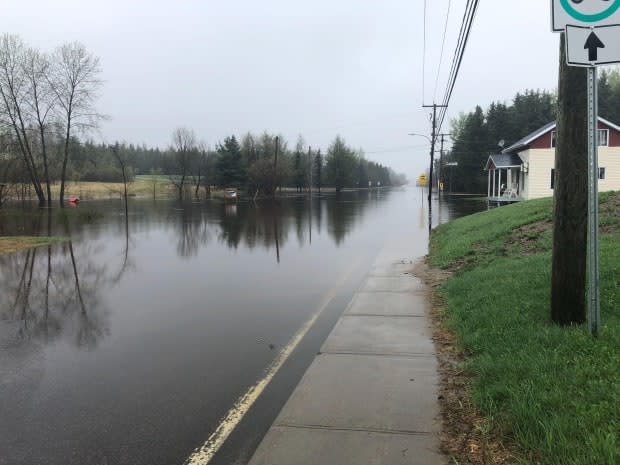Quebec's Saguenay region braces for flooding as water rises to 'exceptional, historic' levels

Water in Lac Saint-Jean is expected to rise to almost six metres this weekend, and officials in Quebec's Saguenay region are bracing for damage to homes from flooding.
As of Saturday morning, public security officials in Roberval said the lake was at "medium" flood risk, with water levels topping the official flood mark in the area.
According to Saint-Félicien Mayor Luc Gibbons, the rising waters have already damaged several roads in the city.
"Public works employees are hard at work," he told Radio-Canada. "We have the situation under control. The bodies of water are stable nonetheless."
Levels in the lake have steadily crept upward since last Sunday, due to rivers overflowing after snowmelt and record rainfall in the region.
The normal level of the lake at this time of year is usually five metres. The lake reached five and a half metres Friday night. Water levels are not anticipated to return to normal until Monday, civil security officials said Saturday.
'Exceptional, historic event'
As of Friday, water in the Saguenay—Lac-Saint-Jean region was dangerously close to reaching homes in Saint-Félicien and Roberval, with water from the lake already starting to seep into some basements in the area.
"We're facing an exceptional, historic event," said Stéphane Larouche, the director of operations for the aluminum producer Rio Tinto, during a news conference Friday morning.
Rio Tinto, which controls a quarter of the water flow under several dams which are part of its hydro power generating stations, is working closely with the province and local municipalities to manage the situation.
"The rivers to Ashuapmushuan and Mistassini received over 60 millimetres of rain over three days. This usually only happens once every 1,000 or 10,000 years," Larouche said.
The two rivers are not under Rio Tinto's control.
Last week, the lake's waters were a bit below typical levels, but those levels quickly rose as record temperatures hit the region, he said.

Roberval has been preparing sandbags for residents, said Serge Bergeron, the mayor of the city on the southwestern shore of Lac-Saint-Jean.
One thing they're watching out for is the Roberval hospital that borders the lake, the mayor told Radio-Canada Friday.
"For the moment there's no need to worry about the hospital, but the water might rise to its basement, which could cause some problems," he said.
Dozens of homes in Albanel, which borders the Mistassini River north of the lake, were evacuated on Wednesday.
The Innu community of Mashteuiatsh, located just next door, is also on high alert and began distributing sandbags on Thursday.
Evacuations have forced 11 residents who live in the Canal du Cheval sector in Saint-Félicien out of their homes, and they won't be able to return until next week.
About a hundred residents living in Le Bôme, mostly permanent residents, are also in a precarious situation, said Saint-Félicien mayor Luc Gibbons.
On Friday, Gibbons said there was already water on several properties.
"The Mistassini River has swollen to its limit," he told Radio-Canada's C'est j'aimais pareil on Friday.

Sandra Belzil, the regional head of civil security, reminded those living near waterways to stay on the alert and to report any potential dangers or flooding to their municipality as soon as possible.
Belzil says they have set up a regional co-ordination centre to support the municipalities surrounding the lake.
"Our principal role in this, as civil security, is to provide advice when it comes to planning, preventive measures, interventions and the re-establishment of anything, if necessary," Belzil said Friday, alongside Larouche.
"Over the last few weeks we've been putting an effort into supporting our municipalities in different ways. We also made sure they would be well prepared ahead of the spring thaw."
Rising waters in Gatineau, Trois-Rivières
Rising waters from the Gatineau River also forced an evacuation of the Foyer Père-Guinard long-term care home in Maniwaki, Que., which began on Friday.
A total of 68 residents could be out of the home for a week, or maybe more.
The mayor of the community north of Ottawa-Gatineau, Francine Fortin, told Radio-Canada Thursday evening that no other evacuations were planned for the rest of the town.

Trois-Rivières's marina and nautical clubs have also temporarily suspended activities until further notice because of rising water levels from the Saint-Maurice River.
"The current puts a lot of pressure on the docks. The decision was made for the safety of boaters and our facilities. I don't want to overload the moorings and have the marina falling into the river," said Mario Cloutier, general manager of the marina, in an interview with Radio-Canada.
The Maïkan Aventure water sports centre, also in Trois-Rivières, has also suspended its boat rentals because of the heavy currents.


